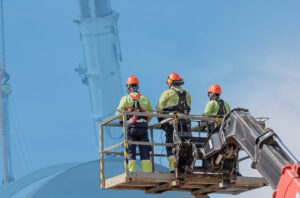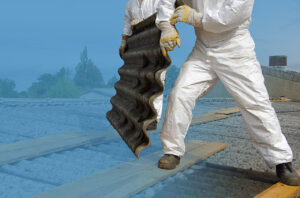Two employers recently received significant fines after children were killed or seriously injured by falling trees on their property.
In the first case Newcastle City Council were fined £280,000 after an incident on 25th September 2020 in which a tree in poor condition in a school playground, fell causing the death of a six year old girl.
In the second case Bupa Care Homes were fined £400,000 after an incident on 8th July 2021 in which a tree, also in poor condition, fell on an eight year old girl as she was jogging by the entrance to a care home with her father, causing serious injuries which required a leg to be amputated.
Both Newcastle City Council and Bupa Care Homes (CFHCare) Limited pleaded guilty to breaching section 3 (1) of the Health and Safety at Work etc Act 1974
In both cases the HSE’s investigation found that systems in place to manage trees were not sufficient. The Health and Safety at Work etc Act states ‘It shall be the duty of every employer to conduct his undertaking in such a way as to ensure, so far as reasonably practicable, that persons not in his employment who may be affected thereby are not thereby exposed to risks to their health or safety’
So what do you need to have in place to manage trees on your property?
Overall the risk of injury to people from trees is low. It has been estimated that between 5 and 6 people are killed and around 55 people injured by falling trees and branches each year in the UK.
Those responsible for trees should carry out an overall assessment of risk to identify priorities and what checks or inspections may be needed. The HSE suggest zoning can be used as part of an effective method of managing trees. This involves defining areas of land according to level of use, the greater the level of use the greater the risk and so the greater the level of management required. A simple method may be to split an area into zone 1 / high risk and zone 2 / low risk areas.
Zone 1 would cover trees that pose a higher risk because there is frequent access e.g. trees subject to regular public access (parks, picnic areas, schools, children’s playgrounds, popular footpaths, car parks) and trees with the potential to fall onto vehicles e.g. trees within falling distance of roads and railways.
Zone 2 would cover trees that are not subject to regular public access and are not within falling distance of a road etc. This means that they pose less danger to the public.
A further category may also be required for certain trees which have been identified as high-risk trees, but where a decision has been made to retain the tree e.g. a tree with a clear structural fault may be retained for heritage or habitat purposes.
Having property maps showing zones and special trees can be a useful document.
The lower risk / zone 2 trees may not require a regular programme of inspection but procedures should be in place to allow problems to be reported and to respond to those reports.
Informal observations of lower risk / zone 2 trees may be carried out on an ad-hoc basis by employees or others going about their normal work. These do not require any specialised tree knowledge, but a familiarity with the area an awareness of the danger if a tree is clearly uprooting or falling apart and a knowledge of who to report any issues to.
Trees in higher risk / zone 1 areas should be subject to a system of periodic, proactive checks. While not needing specific tree health qualifications, the person carrying out such checks should have good general knowledge of trees and an ability to recognise visible signs of ill health or significant structural problems. Again a process should be in place for reporting and acting on any concerns.
How frequently checks should be carried out will depend on individual circumstances, but plans should include checks following potentially damaging activities such as collisions with vehicles, severe gales or after work by utilities company in the immediate vicinity.
Where potential defects or issues are identified there should be procedures in place for obtaining specialist assistance such as further inspection or remedial work by a tree specialist.
Finally any special high-risk trees may require a specific programme to be in place including regular detailed inspections by a competent specialist, alongside regular informal inspections and inspections following adverse weather.
Some areas to consider for someone carrying out general tree inspections include:
- Are there any broken, detached or fallen branches?
- Are there any large / heavy limbs overhanging property?
- Does the tree have cavities or rotten wood along the trunk or in major branches?
- Are mushroom types of fungi present at the base of the tree?
- Are there cracks or splits in the trunk or where branches are attached?
- Have adjacent trees fallen over or died?
- Has the trunk developed a strong lean?
- Is there damage by machinery, vehicles, or animals?
- Has local building work damaged the tree?
- Have the roots been broken off, injured or damaged by lowering the soil level or by drought conditions?
- Have the leaves shed prematurely or developed an unusual colour or size?
When unsure of the safety of a tree it is important to get an expert opinion.
As well as identifying zones inspection requirements your risk assessment may also identify other actions that can be taken to reduce or manage risk. Some examples of other actions that can be taken include:
- Procedures for closing paths and restricting access when high winds are forecast
- Taking action to avoid root damage by prohibiting parking under trees
- Locating facilities such as picnic tables, play equipment, assembly points, information boards etc away from the falling range of trees
- Routing paths away from high risk areas
In summary a system for managing risks from trees may include:
- An assessment of risk, including, where relevant, maps identifying zones and special trees
- Plans for carrying out routine checks where required
- Procedures for reporting damage and triggering checks e.g. following vehicle collisions
- Procedures for obtaining specialist assistance when needed
- Procedures for ensuring safety in high winds
- Monitoring to ensure that the plans made are correctly put into practice
Further guidance on managing trees can be found on the HSE’s website at: https://www.hse.gov.uk/foi/internalops/sims/ag_food/010705.htm
If you have any questions or would like support with managing issues at your workplace, please speak to your usual contact or get in touch using the form below.

New rules for providers of social housing in England

Small but mighty – working safely with nanomaterials

Do you have a MEWP rescue plan?

Changing the asbestos control regime

HSE Launch Motor Vehicle Paint Spraying Campaign
